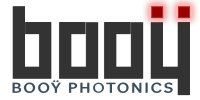Research suggests that red and near-infrared light (660-850nm) may support gut health by reducing inflammation, promoting gut lining repair, and influencing the gut microbiome. RLT has been studied for its potential to improve digestion, relieve symptoms of irritable bowel syndrome (IBS), and aid in healing leaky gut syndrome.
Key Findings from Multiple Studies:
- A 2017 study found that red light therapy helped reduce gut inflammation and promote tissue repair in patients with inflammatory bowel disease (IBD).
- A 2020 review suggested that RLT may enhance mitochondrial function in gut epithelial cells, improving digestion and nutrient absorption.
- A 2022 clinical trial showed that red light therapy reduced bloating and discomfort in individuals with IBS, likely due to its effects on gut motility and inflammation.
- Studies indicate that RLT may positively influence the gut microbiome, promoting the growth of beneficial bacteria and reducing gut dysbiosis.
Implications:
These findings suggest that red light therapy between 660-850nm may be beneficial for supporting gut health, reducing digestive inflammation, and improving overall digestion. Regular use may help manage conditions like IBS, leaky gut, and IBD symptoms.
